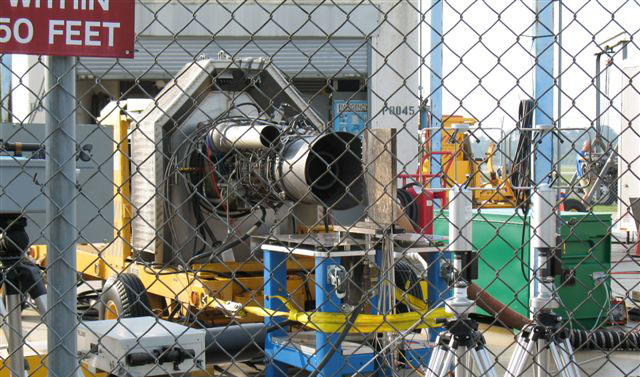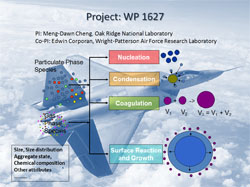Understanding Military Aircraft Emissions
SERDP Project-of-the-Year

Military aircraft produce significant particulate and gaseous emissions. These emissions are deposited directly into the atmosphere effectively contributing to change in air composition, radiation balance, and possibly cloud life cycle from local to global scale. The majority of aircraft fuel consumed by the US military is used by high-payload aircraft; e.g. cargo planes (C-130H) and bomber aircraft (B-52).
There are limited commercial aircraft emissions data, but very few from military aircraft. The transformation and transport of precursor gases and the ultrafine particles in the reactive plume of aircraft exhaust are not well understood at present. Observations from the field measurement of a C130H cargo aircraft reveal the particulate matter was dominant by soot and sulfate in the particles of diameter smaller than a couple hundred of a nanometer. Research also reveals that particles (smaller than 20 nm) were produced in the near-field location, but at the engine exhaust plane . Data also show that measurements located some 15 m from the engine exhaust plane result in indiscernible emissions patterns. Significant volatile carbon fraction exists at idle engine condition, and organic species in the fraction did condense onto ultrafine particles when the exhaust was cooled down in the ambient. Current emissions measurement methodology is unsuitable for the ultrafine particles that are the dominant species in aircraft exhaust. Extractive sampling using a dilution probe appears to effectively quench aerosol dynamics right at the probe tip, thus yielding the only reliable means for quantitative determination of aircraft emissions at present.Barksdale B52 Test Idle Video Clip
For more information, contact:
Meng-Dawn Cheng (chengmd@ornl.gov, 865-241-5918)



